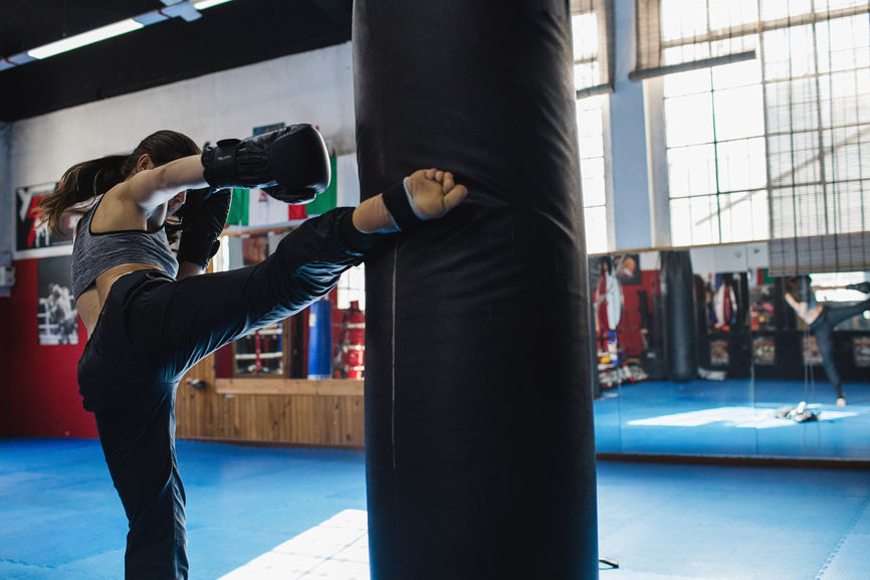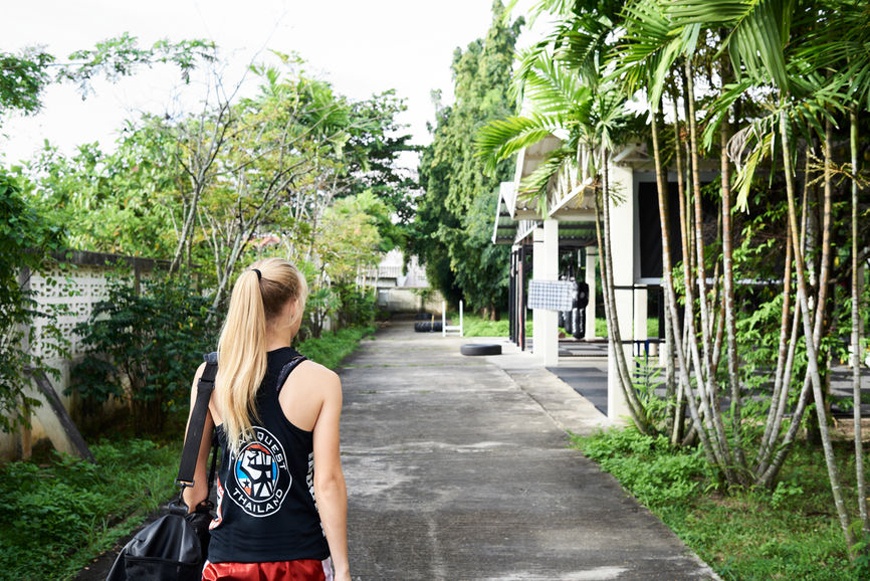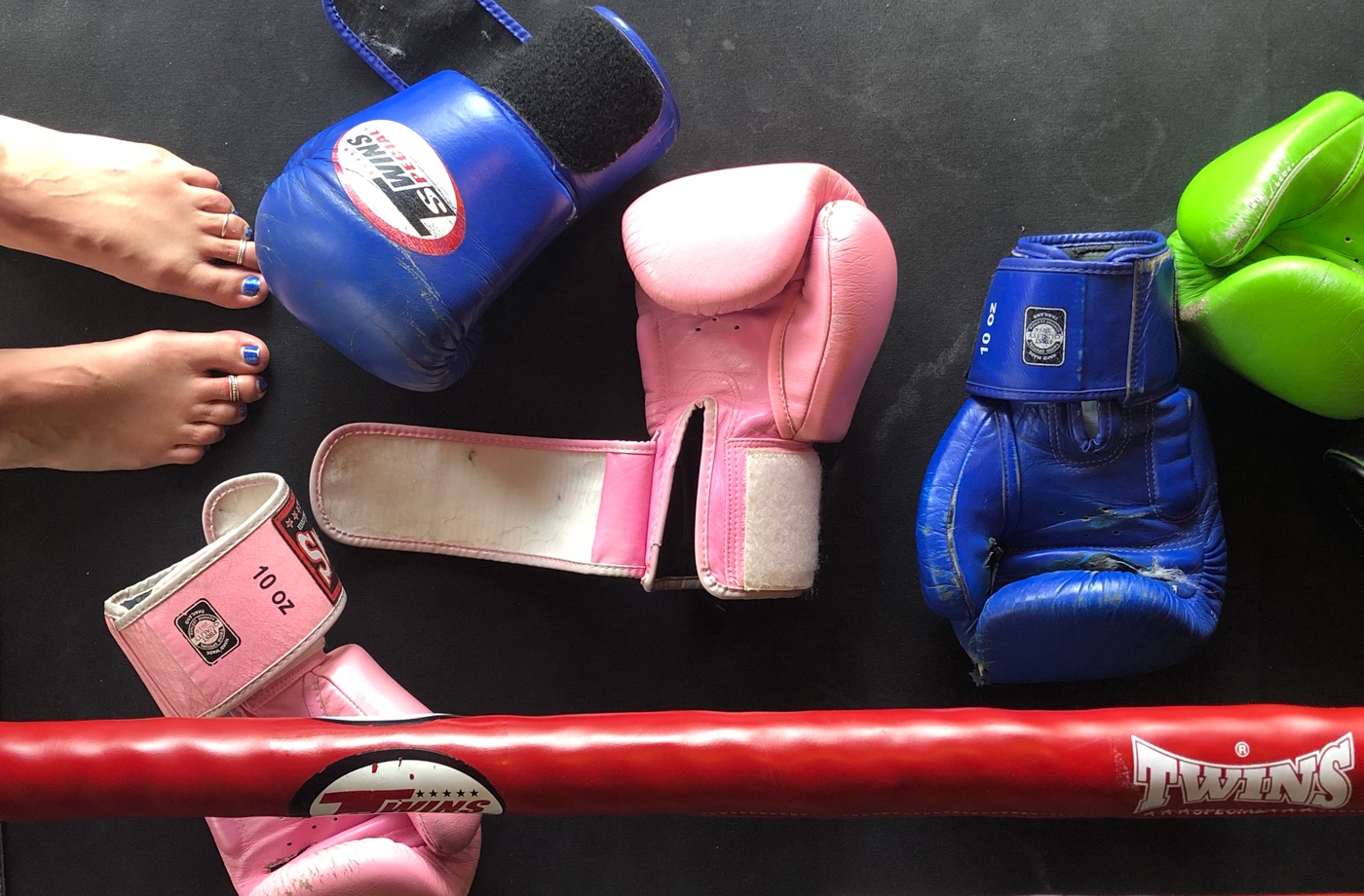I Traveled 8,600 Miles to Fall in Love—With Muay Thai Boxing
You’ve likely heard about Muay Thai at some point recently; the national sport of Thailand is fast becoming the workout du jour of wellness models like Gracie Carvalho and Mia Kang and the all-body boxing sensation is a high-intensity experience.
That’s why I was understandably pumped to try the sport on a recent trip to Thailand. The Muay Thai whisperers had already piqued my curiosity, and on top of that, as an inveterate traveler, I was excited to experience the sport that’s such a huge part of Thai culture.
I fell in love with Muay Thai boxing—absolute, total, surprising, unexpected love.
Still, I hadn’t really hopped on the martial arts train at that point—running is my main thing—so I figured it would be a one-and-done type of deal: I’d check out a class, work up a major sweat (and fight off my jet lag at the same time), and then refuel with delicious curry.
Spoiler alert: The curry dish was, indeed, delicious, but the bigger treat was the workout itself. I fell in love with Muay Thai boxing—absolute, total, surprising, unexpected love. I’ve been back from Thailand for a few months now, and I’ve already taken a couple classes at home in New York City—and I don’t plan on stopping.
But here's why authentic Muay Thai training in Thailand is definitely worth traveling for.

What is Muay Thai boxing?
In traditional boxing, you’re only allowed to hit with your fists—but in Muay Thai (known as “The Art of Eight Limbs”), you use eight points of contact: your fists, your shins, your elbows, and your knee. When you’re training, the idea is you work with a partner (either an instructor if it’s a small class, or another participant if it’s a bigger class), and you spend about half your time punching and kicking pads, and the other half holding the pads for your partner. You also do a hard-core circuit training warm up (burpees and high knees) before you begin. It’s much more of a full-body workout than traditional boxing, and it gets very intense very quickly.

{{post.sponsorText}}
There’s a mental aspect to Muay Thai boxing that helps bring it to next-level status. When you're taking a class, your partner will tell you what to do at rapid speed—"kick kick punch, kick kick jab," etc.—so you have to be alert the entire time. Things move so quickly that you end up firing shots without even thinking about it and acting mostly on reflex, which requires serious mental agility. One of the instructors in Thailand said “Muay Thai makes you smarter.” While I can’t confirm that scientifically, I can say anecdotally that Muay Thai has certainly helped me pay more attention to my mind-body connection.
One of the instructors said “Muay Thai makes you smarter.” While I can’t confirm that, I can say Muay Thai has helped me with my mind-body connection.
It’s also just fun. I’ll be the first to admit that if I’m not feeling a workout or, more likely, I’m just feeling lazy, I’ll coast. I won’t do all of the reps, or I’ll lift lighter weights, or I’ll take the modification where necessary. You know, that slacking life! But with Muay Thai, you can’t slack. And more importantly, you probably won’t want to. I’ve found that because there is so much to pay attention to, I am constantly in the zone—and thus improving. With every punch, jab, and kick, I can feel myself get a little stronger and my technique get a little better.

Why Muay Thai is worth traveling for
Practicing in Thailand, there is an additional cultural context to the mentally and physically challenging sweat sessions—and that's what made me fall in love with it from the get-go.
For one thing, Muay Thai is deeply embedded in the history of Thailand. “Muay Thai is the one thing you should experience when visiting Thailand. It’s part of our cultural tradition, and it’s charming, unique, and fun,” says Khun Fluke, my Muay Thai instructor at RSM Muay Thai Academy in Bangkok.
And right now, that cultural treasure is undergoing a major future-is-female transformation. Historically it's been a male-dominated sport, but there's an influx of women happening now, something I witnessed firsthand: The Bangkok studio where I trained with Fluke was split 50/50, and the majority of the women training were ripped. The most inspiring person of all, though, was a 12-year-old girl named Donut whom I met when my friend Sophie and I took a private class in Hua Hin, a beach town outside of Bangkok. Donut absolutely dominated. The girl just killed it. And when I asked her after class what she loved about the sport, she told me she did it because it “made her feel powerful.”
Seeing a 12-year-old girl feel strong and free in that way, especially knowing that she’s part of a wave of female boxers, inspired me to use Muay Thai to bring that feeling of empowerment and courage home with me.

What to know before you throw your first jab
First of all: If you can get to Thailand, you should. The class I took in Bangkok was specifically tailored to beginners. Fluke said it's important to avoid mistakes that could lead to injury. More and more resorts around the country are also offering beginner classes for guests.
No matter where you choose to try Muay Thai, the most important part is to just get out there and do it. Fair warning though: You’ll likely come back with a whole lot of bruises—I certainly did—but those battle wounds are the best souvenir of all.
If you needed more reason to book a trip to Thailand, consider this: It's the ultimate self-care destination. And if boxing is already your jam, check out this women-only boxing gym.
Loading More Posts...